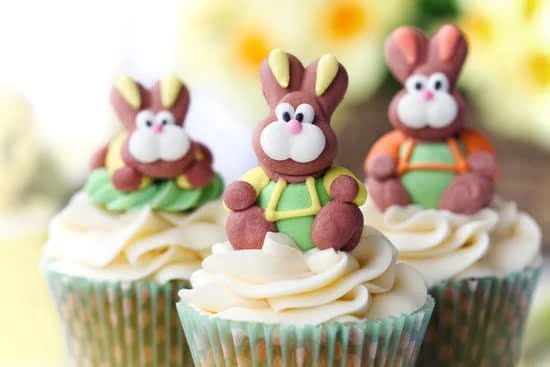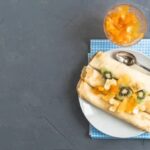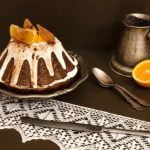Cake decorating sticks are essential tools for creating beautiful and unique cake designs. These small, versatile sticks play a vital role in elevating the appearance of cakes, adding dimension, structure, and artistic flair. Whether you are a professional cake decorator or someone who enjoys baking as a hobby, understanding the importance of cake decorating sticks and how to use them effectively can take your creations to the next level.
Cake decorating sticks come in various types, including wooden, plastic, and metallic options. Each type has its pros and cons, which we will explore in detail later in this article. The choice of cake decorating sticks depends on factors such as the type of cake you are working with, the complexity of your design, and personal preference.
Incorporating cake decorating sticks into your designs opens up a world of creative possibilities. From constructing edible structures to adding height and dimension or even creating intricate cake bouquets, these little sticks can make a big impact. In this article, we will not only provide you with step-by-step guidance on how to use cake decorating sticks effectively but also highlight innovative uses and inspirational designs where they have been utilized to achieve stunning effects.
So whether you are new to cake decorating or looking to expand your skills, don’t underestimate the power of cake decorating sticks. Let’s dive into this comprehensive guide that will help you understand everything you need to know about these essential tools for creating beautiful and unique cake designs.
The Different Types of Cake Decorating Sticks
Cake decorating sticks come in a variety of materials, each with their own benefits and drawbacks. It’s important for bakers and cake decorators to understand the different types available in the market to make an informed decision on which ones will best suit their needs. In this section, we will explore the various options, including wooden, plastic, and metallic cake decorating sticks, and discuss their pros and cons.
Wooden Cake Decorating Sticks
Wooden cake decorating sticks are a popular choice among bakers due to their affordability. They are typically made from food-safe materials such as birchwood and offer a natural aesthetic to cake designs. Wooden sticks are sturdy and can support lightweight decorations or act as support structures for cakes that require additional stability.
One downside of wooden cake decorating sticks is that they are not adjustable or bendable like some other materials. This means they may not be suitable for intricate or complex cake designs that require more flexibility. Additionally, wooden sticks can absorb moisture from the cake or frosting over time, potentially compromising their structural integrity.
Plastic Cake Decorating Sticks
Plastic cake decorating sticks provide flexibility and versatility in terms of design possibilities. They are available in various lengths, widths, and shapes, making them ideal for creating customized decorations or supporting different types of cakes.
Plastic sticks are lightweight yet durable, allowing them to hold up against heavier decorations without compromising stability. Unlike wooden sticks, plastic ones do not absorb moisture from the cake or frosting. However, it’s important to choose food-grade plastic sticks that are safe for consumption.
Metallic Cake Decorating Sticks
Metallic cake decorating sticks offer a sleek and modern look to cake designs. They are typically made from stainless steel or other food-grade metals that are resistant to rusting or corroding. Metallic sticks are known for their strength and durability, making them suitable for supporting heavier cake decorations or constructing elaborate structures.
One drawback of metallic cake decorating sticks is their higher price point compared to wooden or plastic options. They can also conduct heat, so caution must be taken when using them in hot environments or with cakes that need to be refrigerated.
Choosing the Right Cake Decorating Sticks for Your Project
When it comes to choosing the right cake decorating sticks for your project, there are several factors to consider. Here are some tips and tricks to help you select the perfect cake decorating sticks based on the type of cake, design complexity, and personal preference.
- Type of Cake: The type of cake you are working with will determine the type of cake decorating sticks you should use. For example, if you are working with a delicate sponge cake, it is best to opt for lightweight and flexible plastic or wooden sticks.
On the other hand, if you are working with a dense or heavy cake such as a fruitcake or mudcake, metallic cake decorating sticks may be more suitable due to their strength and durability. - Design Complexity: The complexity of your cake design will also play a role in selecting the appropriate cake decorating sticks. If your design involves intricate details or requires multiple layers or tiers, consider using longer cake decorating sticks that can provide stability and support. Additionally, if your design includes elements that need to be attached vertically or at an angle, adjustable or bendable metallic sticks may be necessary to achieve the desired effect.
- Personal Preference: Personal preference is another important factor when choosing cake decorating sticks. Some decorators prefer wooden sticks for their natural look and feel, while others prefer plastic or metallic ones for their versatility and reusability. Consider what qualities are most important to you when it comes to handling and manipulating the sticks during the decorating process.
In summary, choosing the right cake decorating sticks for your project involves considering factors such as the type of cake, design complexity, and personal preference. By taking these factors into account, you can ensure that you select the perfect cake decorating sticks that will enhance your creativity and bring your vision to life.
| Factors to Consider | Tips and Tricks |
|---|---|
| Type of Cake | – Lightweight and flexible plastic or wooden sticks for delicate cakes
|
| Design Complexity | – Longer sticks for stability and support in intricate designs
|
| Personal Preference | – Wooden sticks for a natural look and feel
|
Creative Uses of Cake Decorating Sticks
Cake decorating sticks are not just limited to providing support and stability to cakes. They can also be used creatively to add unique and eye-catching elements to cake designs. Here are some innovative and artistic uses of cake decorating sticks:
- Creating Edible Structures: Cake decorating sticks can be used as the base for creating edible structures, such as buildings, trees, or even entire scenes. By attaching fondant or gum paste shapes to the sticks, you can bring your cake design to life. For example, you can use the sticks as the frame for a gingerbread house or create a multi-tiered cake stand using stacked cake boards held together by the sticks.
- Adding Height and Dimension: Cake decorating sticks can be an effective way to add height and dimension to your cakes. By inserting longer sticks into the bottom layer of a tiered cake, you can raise the upper layers and create a visually striking design. This technique is especially useful when making wedding or celebration cakes where you want certain elements or tiers to stand out.
- Constructing Cake Bouquets: Cake decorating sticks can also be used to create beautiful bouquets on top of cakes. Simply attach edible flowers made from gum paste or fondant onto the ends of the sticks using edible glue or royal icing. Arrange them in a bouquet formation and insert the other end of the stick directly into the cake. This technique adds a touch of elegance and sophistication to any cake design.
Incorporating these creative uses of cake decorating sticks into your cake designs will surely impress your guests and make your creations stand out from the rest. The possibilities are endless with these versatile tools, so don’t hesitate to experiment and explore different ways to elevate your cake decorating skills using cake decorating sticks.
Step-by-Step Guide
Cake decorating sticks are essential tools for creating beautiful and unique cake designs. This step-by-step guide will provide you with a detailed tutorial on how to effectively use these sticks, from prepping and attaching them securely to implementing various cake decorating techniques.
Step 1: Prepping the Cake Decorating Sticks
Before using cake decorating sticks, it is important to ensure that they are clean and free from any debris. If using wooden or plastic sticks, make sure they are food safe and have no sharp edges. Metallic cake decorating sticks should be polished and sanitized before use to avoid any cross-contamination.
Step 2: Attaching the Cake Decorating Sticks
To attach the cake decorating sticks securely to your cake, apply a small amount of edible adhesive or melted chocolate onto one end of the stick. Then gently push it into the desired location on the cake. Ensure that the stick is firmly embedded in the cake without damaging its structure.
Step 3: Implementing Various Cake Decorating Techniques
Cake decorating sticks can be used in various ways to enhance your designs. For adding height and dimension, insert multiple sticks evenly around the outline of a tiered cake to support upper layers. To create an edible structure, such as a castle or bridge, connect multiple sticks together using edible glue or royal icing.
Additionally, cake decorating sticks can be utilized for constructing artistic elements like flower bouquets. Attach floral wires or skewers to edible flowers or sugarpaste shapes using floral tape or fondant adhesive. Then insert these wired decorations into foam blocks secured with cake wax directly on top of the decorated cake.
| Step | Action |
|---|---|
| 1 | Prep the Cake Decorating Sticks |
| 2 | Attach the Cake Decorating Sticks |
| 3 | Implement Various Cake Decorating Techniques |
Cake Decorating Sticks and Food Safety
Cake decorating sticks not only enhance the visual appeal of cakes but they also play a crucial role in ensuring food safety. When using cake decorating sticks, it is important to prioritize hygiene and follow proper cleaning and handling procedures. This section will discuss the significance of food safety when using cake decorating sticks and provide helpful guidelines for maintaining cleanliness throughout the cake decorating process.
When it comes to food safety, cleanliness is key. Before using cake decorating sticks, it is essential to wash them thoroughly with warm soapy water to remove any dirt or debris. Be sure to rinse them well and allow them to air dry before using them on your cakes. It is advisable to have separate sets of decorating sticks dedicated solely for edible purposes to avoid cross-contamination with non-food items.
In addition to washing the cake decorating sticks, it is also important to clean the surface of the cakes where they will be inserted. Use a clean cloth or paper towel dampened with rubbing alcohol or a food-safe disinfectant spray to sanitize the areas before inserting the sticks. This step helps minimize the risk of bacteria transfer from the stick onto your cake.
Furthermore, proper handling procedures should be followed when using cake decorating sticks. Always handle them with clean hands or wear food-safe gloves if necessary. Avoid touching any part of the stick that will come into direct contact with the cake to prevent potential contamination.
By prioritizing hygiene and adhering to food safety guidelines, you can ensure that your cakes not only look beautiful but are also safe for consumption. Maintaining cleanliness when using cake decorating sticks will give you peace of mind knowing that you have taken all necessary precautions to protect yourself and anyone who enjoys your delicious creations.
Trendy and Inspirational Cake Designs
The Geometric Cake Trend
One of the hottest trends in cake design is the use of geometric patterns. Cake decorating sticks can be instrumental in creating these intricate and precise designs. By using wooden or plastic cake decorating sticks, bakers can create geometric shapes such as squares, triangles, or hexagons on the sides or even on top of their cakes.
These shapes can then be filled with different colors, textures, or edible paint for a striking visual effect. With cake decorating sticks as their guide, bakers can unleash their creativity and experiment with various geometric patterns to achieve truly mesmerizing designs.
Gravity-Defying Structures
Cake decorating sticks are also widely used to construct gravity-defying structures in cake design. From floating layers to suspended decorations, these sticks provide stability and support for creating elaborate structures that seem to defy the laws of physics.
For instance, a multi-tiered wedding cake with tiers seemingly hovering above each other can be achieved by securing the tiers with cake decorating sticks hidden within the layers. This technique not only adds drama and visual interest but also allows for an impressive display of craftsmanship.
Floral Arrangements
Another popular way to incorporate cake decorating sticks into designs is by creating edible floral arrangements. Cake decorators can attach artificial flowers or fondant decorations onto plastic or wooden skewers to make them resemble real flower stems.
These mini bouquets can then be inserted into the cake at different heights, creating a beautiful cascading effect or adding depth and dimension to a simple design. By playing around with different types and colors of flowers, decorators can create stunning and lifelike floral arrangements that are sure to impress.
Edible Cake Toppers
Cake decorating sticks can also be utilized to create edible cake toppers. Bakers can attach various edible elements, such as fondant figurines or cut-out shapes, onto clean and sanitized metallic cake decorating sticks.
These toppers can then be inserted into the cake to personalize it for a special occasion or theme. Whether it’s a princess crown for a birthday cake or a graduation cap for a celebratory dessert, the possibilities are endless when it comes to creating unique and personalized edible cake toppers using cake decorating sticks.
By showcasing these trendy and inspirational cake designs, bakers and enthusiasts can gain inspiration for their own creations and explore the limitless possibilities of cake decorating sticks. With their versatility and ability to add eye-catching and unique effects, these essential tools are sure to revolutionize any cake design project.
The following sections will provide readers with a step-by-step guide on how to effectively use cake decorating sticks as well as address any issues or challenges that may arise during the process.
Where to Buy Cake Decorating Sticks
When it comes to buying cake decorating sticks, there are plenty of options available in both physical stores and online platforms. It is important to choose reputable stores to ensure that you are purchasing quality cake decorating sticks that will meet your needs. Here is a comprehensive list of some well-known places where you can buy cake decorating sticks.
- Craft Stores: Many craft stores such as Michaels, Hobby Lobby, and Joann offer a wide selection of cake decorating supplies, including cake decorating sticks. These stores often have dedicated sections for baking and cake decorating supplies, making it easy to find the type of sticks you need. Additionally, these stores frequently have coupons and discounts available that can help you save money on your purchase.
- Specialty Baking Stores: Dedicated baking supply stores like Sur La Table and BakeDeco are fantastic options for finding high-quality cake decorating sticks. These stores focus specifically on baking and often have a knowledgeable staff who can assist you in finding the perfect product for your project. They may carry a wider range of options than general craft stores, giving you more variety to choose from.
- Online Retailers: Websites such as Amazon, Wilton.com, and Kitchen Krafts are convenient options for purchasing cake decorating sticks from the comfort of your own home. These online retailers provide detailed descriptions about each product they offer along with customer reviews that can help guide your decision-making process. Some websites also provide recommendations based on customer feedback or offer bundles that come with various types of cake decorating sticks.
- Local Bakeries or Cake Suppliers: Check out local bakeries or specialty cake supply shops in your area for more unique or specialized options when it comes to cake decorating sticks. These establishments may carry harder-to-find products or even handmade/customized options that can add an extra touch of creativity to your designs.
Remember to read customer reviews, compare prices, and consider shipping costs before making a purchase from any platform. By choosing reliable sources for your cake decorating sticks, you can ensure that you are getting high-quality products that will help elevate your cake designs.
Troubleshooting
Cake decorating sticks are a wonderful tool for creating beautiful and unique cake designs. However, like any other tool, they can come with their fair share of challenges. In this section, we will address the common issues and problems that may arise during cake decorating stick usage, and offer practical solutions to help you overcome them.
One of the most common issues when using cake decorating sticks is that they can break or snap under the weight of heavier decorations. To avoid this problem, it’s important to choose the right type of stick for your project. Wooden sticks are generally stronger and more durable than plastic or metallic ones, so opt for wooden sticks when working with heavier decorations. Additionally, make sure to insert the stick deeply into the cake to provide stability and support.
Another issue that may occur is the stick sliding or falling out of the cake. This can be frustrating, especially if you’ve spent a significant amount of time on your design. To prevent this from happening, try attaching the stick to a sturdy base before inserting it into the cake.
You can use fondant or gum paste to create a small platform or disk that adheres securely to the stick. This will give it extra stability and ensure that it stays in place throughout the duration of your event.
Lastly, some decorators may encounter difficulty when trying to remove cake decorating sticks without damaging their design. Removing the stuck stick can be tricky, but there’s a simple solution. Before attempting to take out the stick, gently twist it in one direction while pulling it upwards at an angle. This twisting motion helps release any suction between the stick and the cake, making removal much easier and reducing the risk of damaging your beautiful creation.
By addressing these common issues and offering practical solutions, you can confidently navigate through any challenges that may arise when using cake decorating sticks. Troubleshooting and problem-solving are essential skills for every decorator to have in their toolbox. With these tips in mind, you’ll be able to create stunning cake designs with ease and overcome any obstacles that come your way.
Conclusion
In conclusion, cake decorating sticks are an essential tool for creating beautiful and unique cake designs. They offer versatility and countless creative possibilities that can elevate any cake to a whole new level. Whether you are a professional baker or a home enthusiast, cake decorating sticks can help you achieve eye-catching effects and add dimension and height to your creations.
Throughout this article, we explored the different types of cake decorating sticks available in the market, including wooden, plastic, and metallic options. Each type has its own pros and cons, so it is important to choose carefully based on your specific project requirements. We also discussed tips on how to select the right cake decorating sticks based on the type of cake, design complexity, and personal preference.
Furthermore, we highlighted various creative uses of cake decorating sticks, such as creating edible structures or constructing beautiful cake bouquets. These innovative techniques can take your cakes from ordinary to extraordinary. Additionally, we provided a step-by-step guide on how to effectively use cake decorating sticks and emphasized the importance of food safety when handling these tools.
As you embark on your cake decorating journey, we encourage you to explore and experiment with cake decorating sticks. Let your imagination run wild and create stunning designs using these essential tools. Don’t be afraid to try new techniques or incorporate current trends into your work. With practice and perseverance, you will see your skills improve significantly.
Remember that there may be challenges along the way when using cake decorating sticks. However, we have also provided troubleshooting tips in this article to help you overcome common issues that may arise during their usage.
Frequently Asked Questions
What kind of sticks do you use for cake toppers?
When it comes to cake toppers, the sticks used can vary depending on personal preference and the style of the cake. The most common type of sticks used are wooden skewers or toothpicks. Wooden skewers are longer and thicker, making them suitable for taller or heavier cake toppers that require more stability.
On the other hand, toothpicks are smaller and thinner, ideal for lighter and smaller cake toppers that don’t require as much support. Some people also opt for food-safe plastic sticks or straws, especially when working with fondant decorations.
How thick should a cake topper stick be?
Determining the ideal thickness of a cake topper stick is crucial for its stability and balance on the cake. Generally, a cake topper stick should have a thickness of around 1/8 to 1/4 inch (3-6 mm).
This size ensures that the stick is sturdy enough to hold the weight of the topper while still being discreet enough not to overpower the overall design of the cake. It’s important not to use a stick that is too thick as it may create an unbalanced look or even damage the delicate icing on the cake.
How do you stick cake toppers to icing?
Attaching cake toppers securely onto icing can be done using various methods depending on the type of icing being used. For buttercream icing, one approach is to gently press the stick into the side or top of the cake at an angle, ensuring it reaches a sufficient depth for stability without poking through the other side. If working with fondant-covered cakes, it’s best to insert the stick directly into a foam base or dummy tier first and then position it onto the fondant-covered surface by lightly pressing down.
Another option is applying a small amount of royal icing or melted chocolate onto one end of the stick before inserting it into the desired spot on top of fondant or buttercream icing. This helps create an adhesive bond between the stick and icing surface, offering additional support for the topper. It’s important to handle the cake with care during this process, avoiding putting excessive pressure on the icing, so as not to dent or damage its appearance.

Welcome to our cake decorating blog! My name is Destiny Flores, and I am the proud owner of a cake decorating business named Cake Karma. Our mission is to provide delicious, beautiful cakes for all occasions. We specialize in creating custom cakes that are tailored specifically to each customer’s individual needs and tastes.





